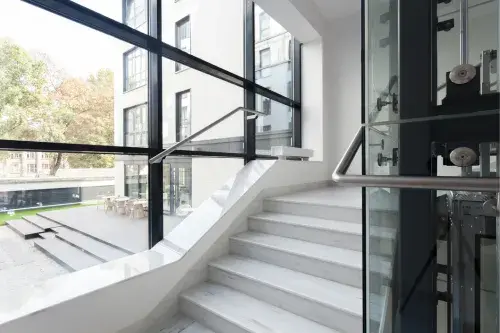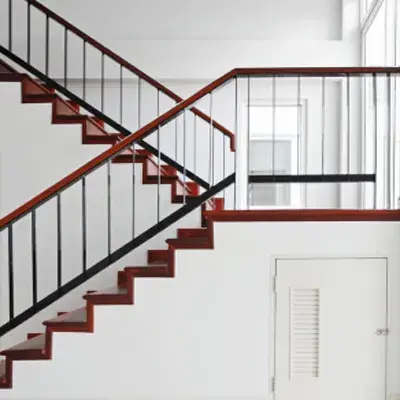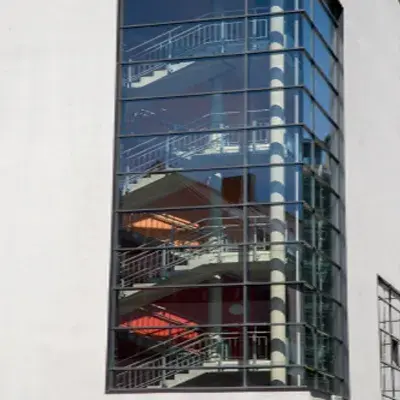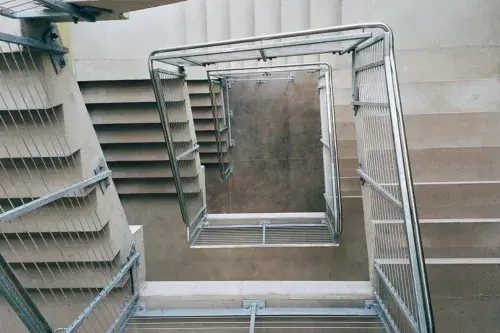Whether shoes, baby carriages, bicycles or decorations outside the front door. Time and again, there is increased annoyance in apartment buildings because the neighbor uses the shared stairwell as a storage place for personal belongings. Fire protection in the stairwell also plays a decisive role here.
Why is fire protection important in the stairwell?
In general:
The residents of an apartment building are entitled to make use of the rented property itself or the common property. This also includes the use of the common stairwell.
Nevertheless, there is the important principle that a stairwell must be safe for use. They must be kept clear at all times so as not to make it difficult for emergency services (e.g. the police, paramedics, emergency doctors or the fire department) to work in an emergency situation. In addition, hallways and stairwells are considered the first escape and rescue routes in the event of a fire. They should not be blocked by objects (e.g. furniture, decorations or bicycles). In addition, it is important to keep the fire load in the stairwell as low as possible to ensure the safety of the occupants in the event of a fire.

Regulations for fire protection in the stairwell
In Germany, there are currently no uniform regulations for fire protection in stairwells. However, there are state-specific fire protection regulations that define what fire protection in the stairwell must look like. In addition, the state building codes require the fire load in the stairwell to be as low as possible, since the stairwell usually also represents the first escape and rescue route. At the same time, care must be taken to ensure that the minimum width of the corridors is not narrowed by objects. This is particularly important since the escape route is also always an attack route for the fire department in the event of a fire and for the rescue service in the event of a medical emergency.

Ensuring safety as a tenant
In principle, the landlord of an apartment building is responsible for the general safety in the stairwell. Thus, he may decide what his tenants are allowed to do and what not. Usually, this is also regulated in the house rules or in the rental agreement.
However, the landlord's task is also to ensure at all times that potential hazards in the stairwell are eliminated and that any associated accidents can be avoided. At the same time, he is responsible for fire protection in the stairwell. This means that he must ensure that escape and rescue routes are marked and unobstructed and that the fire load in the stairwell is as low as possible. This also includes, among other things, functioning safety lighting in the stairwell. This ensures that the occupants can find their way around and leave the building quickly even in the event of a fire.
Fire protection in the staircase
The fire load in the stairwell should be kept as low as possible in order to keep the stairwell free as an escape and rescue route. Learn which objects may be placed in the hallway to ensure fire protection in the stairwell.
Shoes, shoe cabinets and chests of drawers
In principle, shoes have no place in the hallway. However, there is one exception: In appropriate weather, such as rain or snow, the tenant may temporarily place his shoes on his doormat in front of his own front door. It is therefore not permissible for the landlord to completely prohibit shoes in the hallway.
Shoe cabinets and other small chests of drawers should also not be placed in the hallway as a matter of principle. Even if the tenant does not completely block the escape route with his cupboards and thus leaves a wide part of the escape route free, the landlord has the right to prohibit this completely. Subsequently, in the event of a fire with a strong smoke development, these can become poorly visible trip hazards and thus cause accidents, as well as increase the fire.
Rollator, wheelchair and walker
Elderly people in particular may be dependent on a rollator or a walking aid and need these to be able to cope with their everyday lives. If the tenant of an apartment in an apartment building owns an everyday walking aid, it is extremely convenient for him to park it in the hallway in front of his own apartment door. However, these walking aids were the common hallway often clearly.
In principle it can be said however that such going assistance may be put down of in the hall, as far as thereby no tenants or obstructions develop (for example by folding the Rollator). Furthermore, the landlord of the apartment building must ensure that there is a separate parking space for them.
Stroller
In principle, these may be parked in the hallway, provided that the hallway offers the necessary space for this and the lifeguards of other residents as well as the escape and way are not obstructed. However, if the hallway is very narrow, the stroller may only be parked there for a short time.
Bicycles
It is not allowed to park bicycles in the staircase or in the rented apartment itself, because the aforementioned cellars or separate parking spaces are intended for this purpose. If these are not available, the tenant is allowed to take his bike into the apartment.
Plants and other decoration
The placement of plants and flower pots as well as decorations of any kind (e.g. paintings on the wall) can generally be prohibited by the landlord. However, if the tenant absolutely wants to put up a small plant, he can do so, provided that it does not become a tripping hazard. However, small temporary decorations, such as Christmas or Easter decorations, are generally permitted.
Garbage can or bag
Garbage cans may not be placed in the hallway under any circumstances. After a warning and subsequent violation by the tenant, the landlord may even terminate the lease without notice. The same also applies to garbage bags of any kind, because this is a considerable disturbance of the other house inhabitants. In addition, it is very dangerous in terms of fire protection, as garbage of any kind can quickly ignite in case of fire.
Snow shovel, broom and other cleaning utensils
In principle, these materials may be placed in the hallway, provided that no escape and rescue routes are obstructed or even blocked. However, private cleaning utensils for one's own apartment have no place in the hallway.
In summary, the best option is to keep the stairwell completely free of possible objects and commodes. Only in this way it is possible to ensure maximum safety in case of fire with a strong smoke development.
However, it is possible to place objects in the hallway as long as they do not interfere with or obstruct the escape and rescue routes in any way. However, the landlord is responsible for fire protection and safety, which is why the house rules should be posted by the landlord in a place accessible to every occupant of his building and should also be recorded in the individual rental agreements. The instructions of the house rules by the tenant must always be followed.

